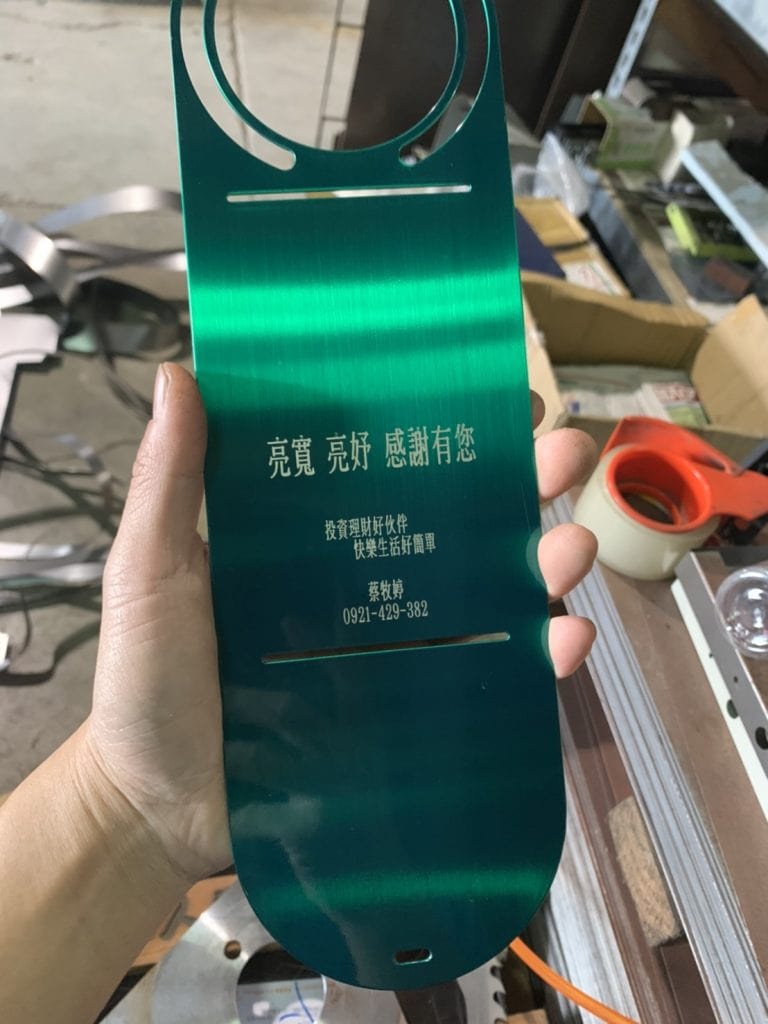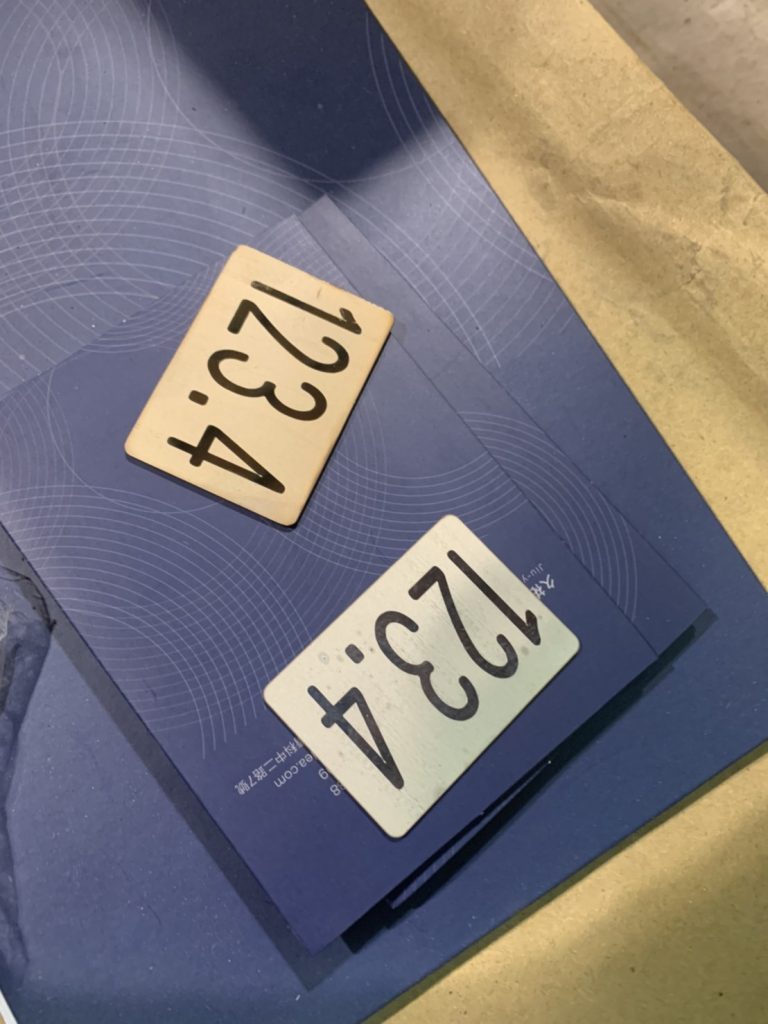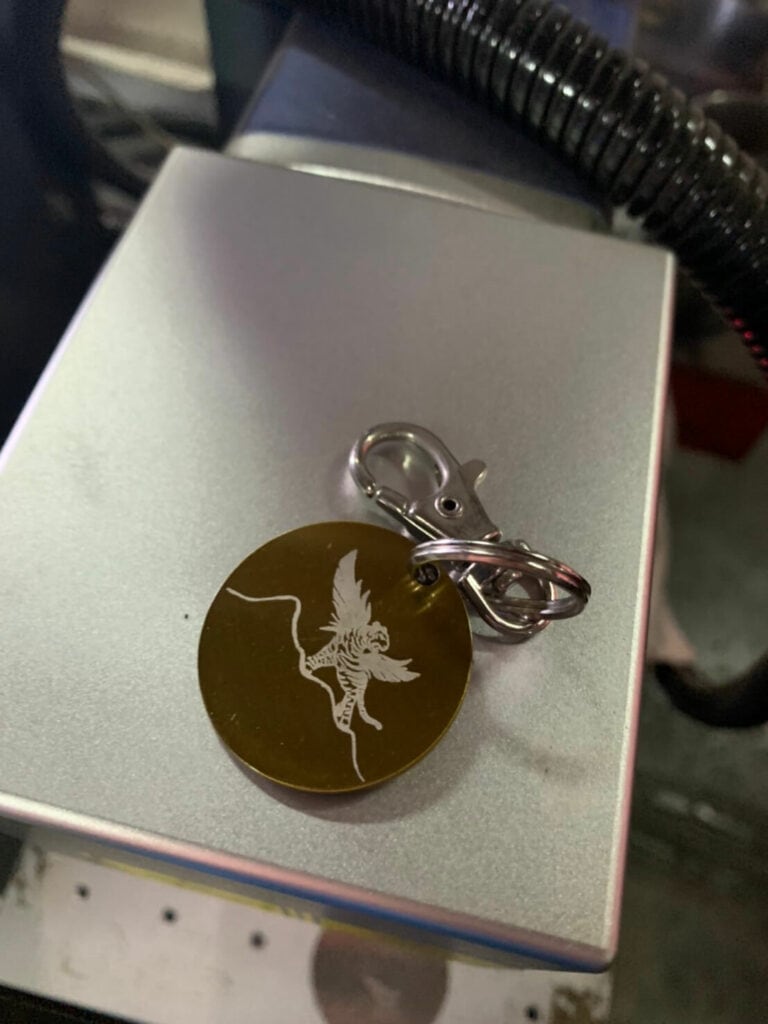You’ve decided to use laser engraving and cutting technology to create a custom product or part. You want to get the job done quickly and accurately, so you’re looking for laser cutting services. But how do you calculate the cost? If this sounds like a scenario you can relate to, then keep reading!
The cost of laser cutting metal processing depends on several factors, but with the right information and research, it’s possible to accurately estimate the cost. In this article, we’ll outline the key factors to consider when calculating the cost of laser engraving and cutting metal. Finally, we’ll offer some tips to ensure you’re getting the most value for your money. So, follow along as we dive into the world of laser cutting metal cost calculation.

What is laser cutting metal engraving and cutting?
Laser cutting metal engraving and cutting is an accurate and efficient method of customizing various metal surfaces. While it’s perfect for marking serial numbers, barcodes, company logos, artwork, and more, the cost of laser processing can be somewhat intimidating. So, how do you calculate the cost of metal laser engraving?
First, it’s important to understand the basics of laser cutting metal engraving and cutting. Lasers can work on any type of metal, including steel, stainless steel, aluminum, copper, brass, etc. By focusing a beam of intense light through a computer-guided lens onto the metal surface, engraving can be completed in a matter of seconds with unmatched precision.
The cost of laser cutting metal engraving services comes from four main factors: material type, material thickness, size/measurements, and complexity. Thicker materials will require more intense processing than thinner materials, and similarly, larger designs will be more expensive than smaller ones. Keep in mind that complex graphics will also increase costs, as additional processing time is needed to accurately create them.
Material and Labor Costs
Understanding the cost of metal laser engraving and cutting can be complicated, but with a clear understanding of the process and materials used, you can accurately calculate it. When calculating costs, there are two main factors to consider: the materials used and the labor required to prepare and operate the laser cutting machine.
Materials
The type and quality of material will impact your overall cost. Make sure you know what type of material your project requires and ensure it’s compatible with your laser cutting machine. You should also consider whether you need any additional materials, such as masks or special adhesives, which will add to the cost.
Labor
The labor involved in setting up a metal laser engraving or cutting project is an important factor in calculating its cost. Depending on the complexity of the job, there may be additional fees related to design work, programming time, cutting time, and machine maintenance. When calculating the total cost of a laser job, all of these expenses should be taken into account.

Additional Costs of Laser Cutting and Engraving
Whenever you receive a price calculation for metal laser engraving and cutting, you may also come across some “additional fees.”
So, what are these laser cutting service costs? Here are the most common ones:
- Artwork Proofing – Depending on the complexity of the design, an artwork proofing fee may be charged. This ensures that everything will look perfect before the laser cutting and engraving process begins.
- Setup Fee – The setup fee includes the costs for preparing the laser cutting and engraving work, including machine programming, testing, and any other related tasks that need to be completed before starting.
- Artwork Conversion – In some cases, if the artwork is not in vector file format, there may be an additional charge to convert the artwork or image into a vector file to be used on the laser cutting and engraving machine.
- Delivery Fee – If you request delivery of your parts after cutting or engraving, there may be an additional charge, depending on your location and requirements.
- Expedited Service – If you need expedited delivery for your work, there might also be an extra charge to cover the costs related to speeding up the production time.
These are just some of the most common additional fees you might see when getting a quote for laser cutting metal engraving and cutting. So, if you want the clearest understanding of the total cost of processing your product, make sure to ask about these fees.
Factors Affecting Metal Laser Engraving and Cutting Costs
Understanding how to calculate the cost of metal laser engraving and cutting will help you budget for the job and determine if it falls within your price range. When trying to determine the cost of this process, there are several factors that need to be considered, all of which are important when deciding on the final price.
Material Type
The type of material used in laser work greatly affects its cost. For example, engraving materials such as wood and acrylic will generally cost less than metals like stainless steel or aluminum. Additionally, some materials may require multiple processing passes on the laser machine, which could increase the overall cost.
Laser Machine Power
When calculating engraving costs, the power of the laser machine is a key consideration. In general, higher wattage means faster processing time, which can save significant time and money on larger jobs. However, high-power laser machines require more energy and maintenance, which can increase the final cost of the job.
Water-cooled or Air-cooled Machines
Another factor that affects the overall cost is whether you’re using a water-cooled or air-cooled machine. Water-cooled machines require additional setup time and more expensive parts, whereas air-cooled machines offer more flexibility at a lower price.
Regardless of which factors you consider when calculating the cost of engraving and cutting with a laser machine, understanding these factors is crucial for running an efficient workshop within your budget.

Calculating Laser Cutting Metal Sheet Pricing for Different Metal Types
When calculating the processing cost for different metal types in laser cutting, several factors need to be considered. Here’s a quick overview of how these costs are calculated and how you can use them to get an accurate estimate for your next project.
Material
The type of metal you use will impact the price of your order. While some metals may be cheaper upfront, they might require more time and higher laser power to achieve the desired result—ultimately increasing the overall cost. Make sure to do research on different metals before making a decision.
Laser Power
The power required for engraving is typically determined by the size, complexity, and precision of the object. The larger or more complex the object, the higher the power required, leading to higher costs.
Required Time
The time required for cutting or engraving depends on two main factors: the speed and quality of the cut, and how many items are processed in one go. Faster speeds may result in lower cutting quality; conversely, slower speeds may lead to better cutting quality but take more time, increasing costs. Also, keep in mind that if you are processing multiple items at once, the total cost per item will be lower compared to processing just one item at a time.
When calculating your laser cutting cost estimate, you must take all of these factors into account so you can choose the most effective and cost-efficient solution for your project.
Conclusion
In short, when it comes to laser cutting metal engraving and cutting, you need to do your homework. Understanding the associated costs will help you save money and ensure that your quotes are fair. Additionally, complex designs may increase processing time, so it’s important to account for this in your budgeting.
Ultimately, the cost of laser cutting metal engraving and cutting will depend on the scale of your project, the complexity of the design, and the materials you use. By asking the right questions and understanding the components of cost calculation, you’ll be able to get the best price and results for your project.
